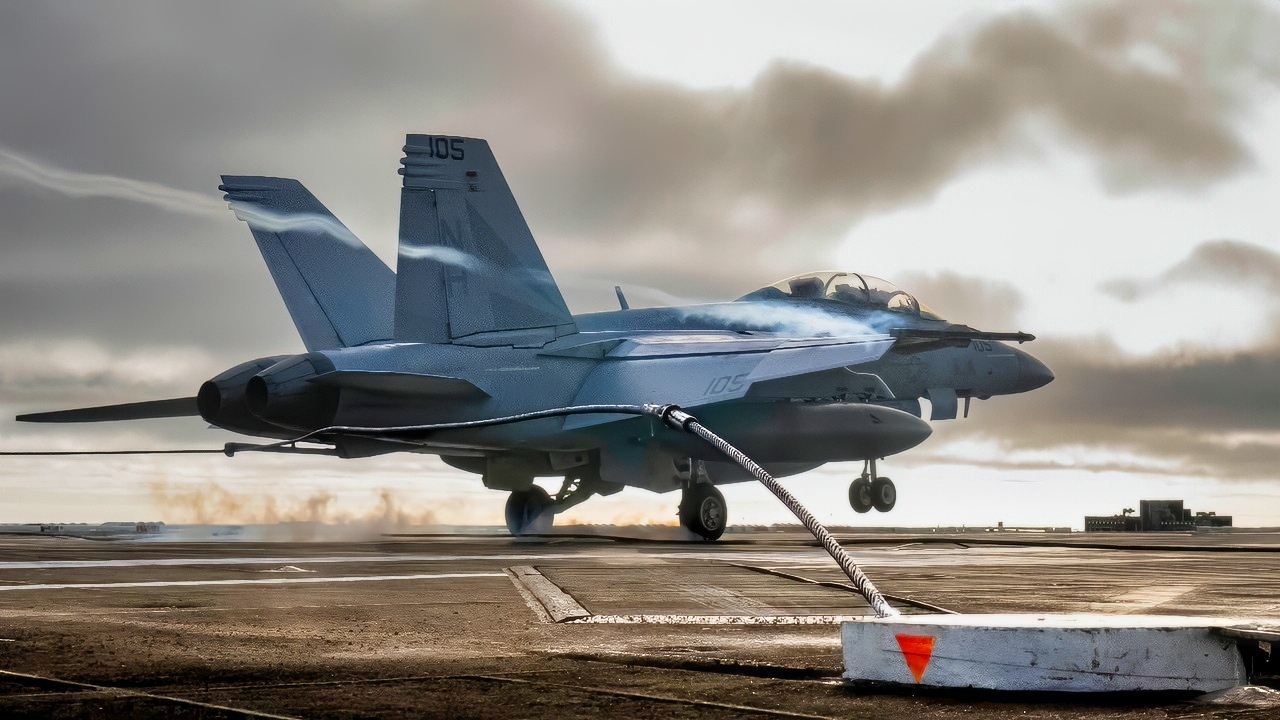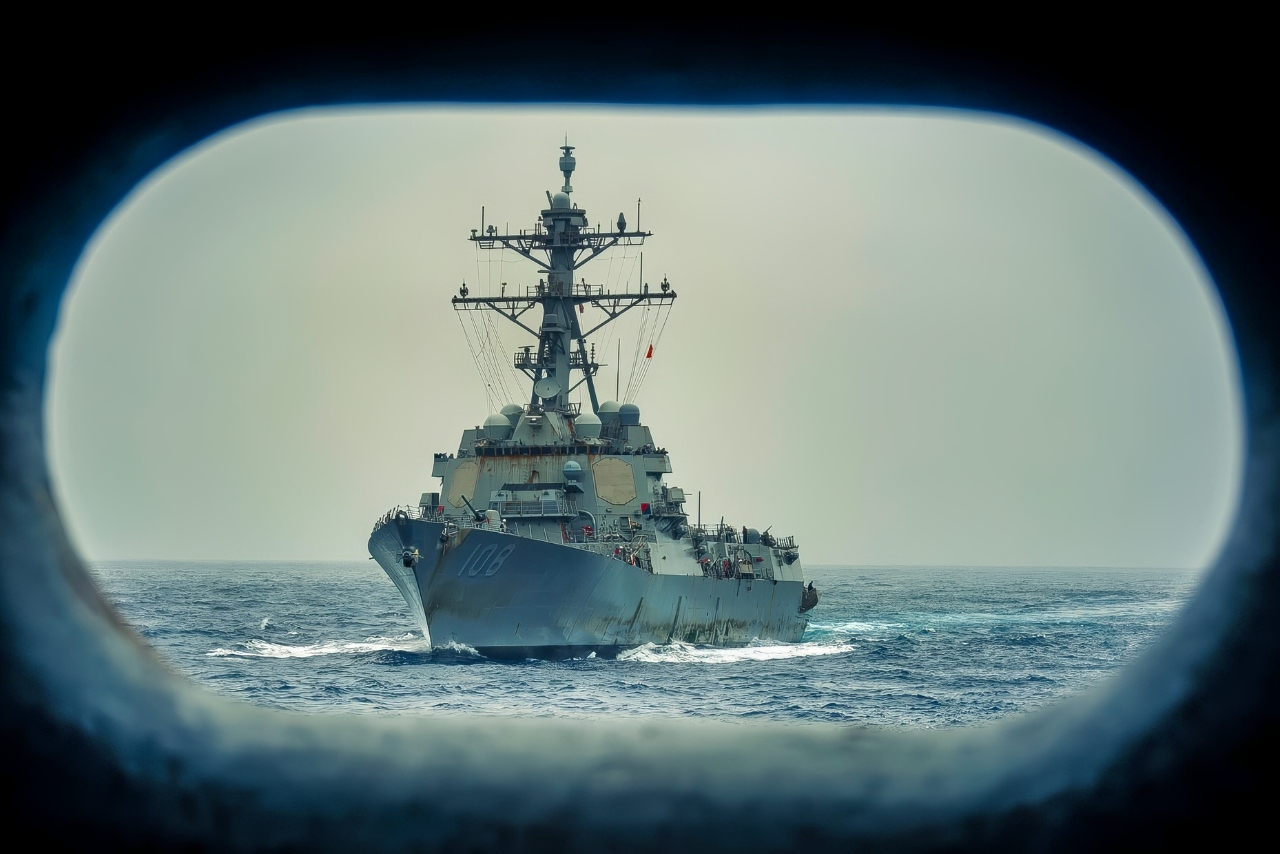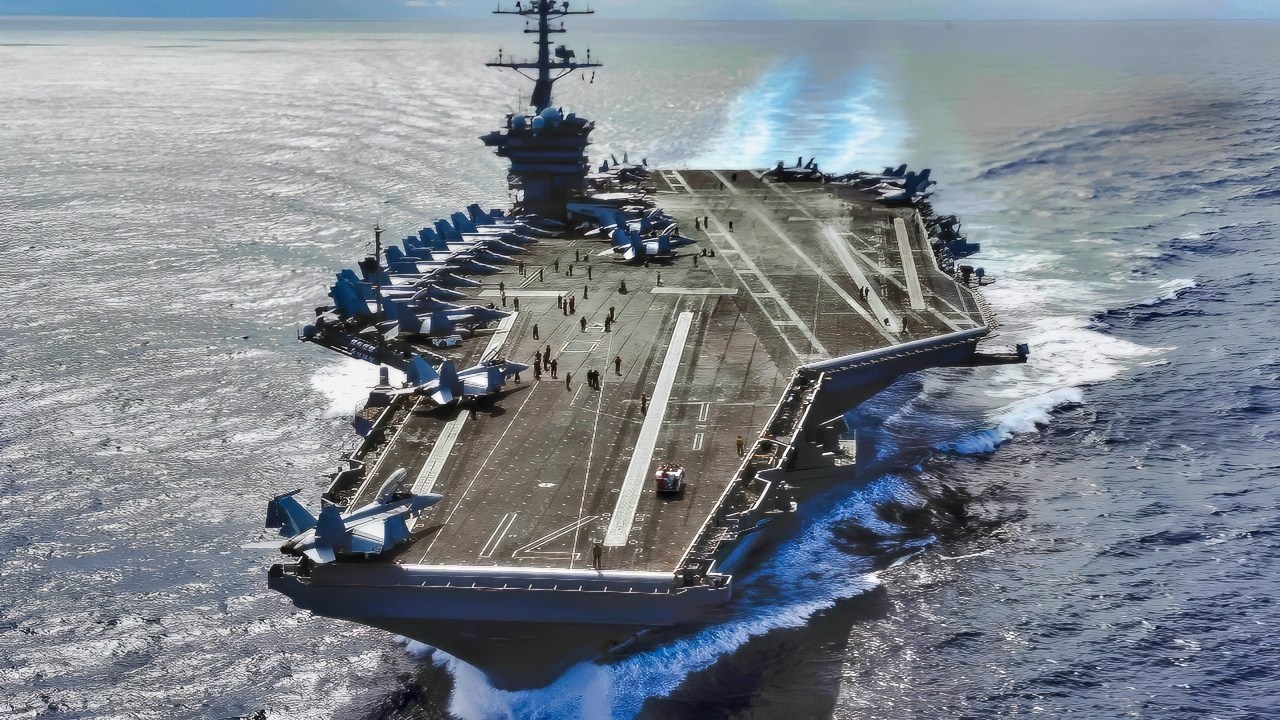Key Points and Summary – In a massive 1999 naval exercise, the Dutch diesel-electric submarine HNLMS Walrus, playing the role of an adversary, achieved a stunning simulated victory against a U.S. aircraft carrier strike group.
-Told it was “expected to lose,” the submarine’s skilled crew used stealth and passive sonar to penetrate the defensive screen.

(Jan 31, 2009) An F/A-18 Super Hornet assigned to the “Tomcatters” of Strike Fighter Squadron (VFA) 31 launches from the flight deck of USS Theodore Roosevelt (CVN 71). The Nimitz-class aircraft carrier and embarked Carrier Air Wing (CVW) 8 are operating in the 5th Fleet area of responsibility and are focused on reassuring regional partners of the United States’ commitment to security, which promotes stability and global prosperity (U.S. Navy photo by Mass Communication Specialist 3rd Class Jonathan Snyder/Released)
-The Walrus “sank” multiple escorts before launching a successful mock torpedo attack on the supercarrier USS Theodore Roosevelt. The carrier is valued at around $4.5 billion and has thousands of personnel on board.
-It then daringly sailed directly underneath the carrier to escape, proving the profound vulnerability of even the most powerful surface fleets to quiet, modern conventional submarines.
The Submarine That Was ‘Expected to Lose’ and Then ‘Sank’ a U.S. Aircraft Carrier
Ever since the end of World War II, the aircraft carrier has been the centerpiece of the U.S. Navy’s strategy.
Carrier strike groups allow the U.S. Navy to project power all across the world and provide assistance to any allies in need.
However, despite the comprehensive measures taken to protect them, aircraft carriers are not invincible.
In one such instance, a Dutch Walrus-class diesel-electric submarine was able to penetrate an American carrier’s defenses and simulate a successful torpedo strike against it.
This was just one of many instances of a small submarine slipping through a carrier strike group to “sink” a super aircraft carrier.
The Context: JTFEX 99-1 Back in 1999
JTFEX 99-1 was one of the largest naval exercises since the Gulf War, involving 24,000 personnel, with 15,000 at sea, and a vast array of ships and aircraft.
The exercise spanned a massive area from Norfolk, Virginia, to Puerto Rico, simulating a high-intensity conflict scenario.
The Carrier Battle Group, led by the USS Theodore Roosevelt, was tasked with defending against a coalition of “enemy” forces, which included the Dutch submarine Walrus and other Belgian-Dutch naval assets.
Among the participating forces was the Royal Netherlands Navy’s diesel-electric submarine, HNLMS Walrus, commanded by Lieutenant Commander Jan Hubert Hulsker.
The Walrus was assigned the role of the adversary in the exercise, tasked with simulating attacks against the carrier group.

A U.S. Navy F/A-18F Super Hornet, assigned to the “Black Knights” of Strike Fighter Squadron (VFA) 154, lands on the flight deck of Nimitz-class aircraft carrier USS Theodore Roosevelt (CVN 71), July 24, 2025. Theodore Roosevelt, flagship of Carrier Strike Group (CSG) 9, is underway conducting exercises to bolster strike group readiness and capability in the U.S. 3rd Fleet area of operations. (U.S. Navy photo by Mass Communication Specialist 3rd Class Aaron Haro Gonzalez)
The submarine was given minimal instructions and was told bluntly by an American officer that it was expected to lose.
The implication was clear: the carrier had to win, and the submarine’s role was merely to provide a challenge.
The Hunt Begins: Aircraft Carrier vs. Submarine
Despite this, Hulsker and his crew approached the exercise with determination and tactical precision.
The Walrus ventured into the Atlantic, relying heavily on passive sonar due to environmental conditions that limited its effectiveness.
These same conditions —temperature layers, salinity, and seabed topography —also hindered the sonar capabilities of the surface ships.
The Carrier Battle Group chose not to use active sonar to avoid revealing their positions, which gave the Walrus a significant advantage in stealth.
Early in the exercise, the Walrus successfully simulated torpedo attacks on an Arleigh Burke-class destroyer, followed by three more destroyers.

(August 1, 2025) The Arleigh Burke-class guided-missile destroyer USS Wayne E. Meyer (DDG 108) approaches the Nimitz-class aircraft carrier USS Nimitz (CVN 68) for a replenishment-at-sea in the U.S. Central Command area of responsibility. (Official U.S. Navy photo)
The submarine’s electronic warfare capabilities played a crucial role, allowing it to detect radar emissions from the carrier group without being detected in return.
This passive detection method enabled the Walrus to track the movements of the fleet and maneuver into an ideal attack position.
The Roosevelt Aircraft Carrier Encounter
The pivotal moment came when the Walrus intercepted multiple radar signals, indicating the presence of a high-value target.
Hulsker ordered the submarine to dive deep and approach silently. After hours of careful navigation, the Walrus surfaced to periscope depth and confirmed the presence of the USS Theodore Roosevelt, surrounded by its escorts.
At a distance of 4,000 yards, the submarine was perfectly positioned for a simulated torpedo attack.
Hulsker ordered the launch and released a green smoke grenade, the exercise signal for a successful submarine strike.
Initially, the attack went unnoticed by the carrier group. Determined to make an impression, Hulsker ordered the Walrus to close the distance even further.
At just 1,500 yards, another green grenade was fired. This time, the reaction was immediate. Sonars were activated across the fleet, helicopters were scrambled, and a frantic search for the submarine began.
But the Walrus had already made its move.
Sailing Beneath the Carrier
In a daring maneuver, Hulsker ordered the submarine to dive and sail directly underneath the Roosevelt.
This required precise calculations to avoid collision with the massive 88,000-ton nuclear-powered carrier.

PHILIPPINE SEA (Sept. 24, 2024) The Nimitz-class aircraft carrier USS Theodore Roosevelt (CVN 71) transits the Philippine Sea, Sept. 24, 2024. Theodore Roosevelt, flagship of Carrier Strike Group 9, is underway conducting routine operations in the U.S. 7th Fleet area of operations. U.S. 7th Fleet is the U.S. Navy’s largest forward-deployed numbered fleet, and routinely interacts and operates with allies and partners in preserving a free and open Indo-Pacific region. (U.S. Navy photo by Mass Communication Specialist 3rd Class Adina Phebus)
The Walrus passed beneath the carrier, causing vibrations that startled the crew above.
Once under the carrier, the submarine launched additional simulated torpedo attacks on nearby escort ships, including the Canadian frigate HMCS Ville de Quebec, a German Brandenburg-class frigate, and an Oliver Hazard Perry-class frigate.
Despite the intense countermeasures deployed by the carrier group, the Walrus managed to escape amidst the acoustic chaos.
Hulsker later reflected that while the submarine may have been attacked in the simulation, it was unclear whether any countermeasures were effective. In a real-world scenario, the noise from a sinking carrier would have further masked the submarine’s escape, making it even more challenging to track.
The Aftermath
By the end of the exercise, the Walrus had successfully “sunk” eight ships, including the USS Theodore Roosevelt. The crew celebrated their success by painting a cartoon of a walrus biting an aircraft carrier on the submarine’s sail and publishing a shipboard newspaper with the headline: “Theodore Roosevelt Torpedoed.”
However, the reaction from the surface fleet was subdued. Hulsker received a brief message from a U.S. admiral thanking the crew for their impressive performance, but otherwise, the incident was largely hushed up.
A Canadian navigation officer, tasked with photographing the Roosevelt through the periscope, had forgotten to load film into the camera, missing the opportunity to capture the moment.
The implications of the Walrus’s success were profound. It demonstrated that even the most advanced and heavily defended naval formations could be vulnerable to stealthy, well-commanded diesel-electric submarines.

PHILIPPINE SEA (Feb. 5, 2024) The Nimitz-class aircraft carrier USS Theodore Roosevelt (CVN 71) transits the Philippine Sea, Feb. 5, 2024. Theodore Roosevelt, flagship of Carrier Strike Group Nine, is underway conducting routine operations in the U.S. 7th Fleet area of operations. An integral part of U.S. Pacific Fleet, U.S. 7th Fleet operates naval forces in the Indo-Pacific and provides the realistic, relevant training necessary to execute the U.S. Navy’s role across the full spectrum of military operations – from combat operations to humanitarian assistance and disaster relief. U.S. 7th Fleet works together with our allies and partners to advance freedom of navigation, the rule of law, and other principles that underpin security for the Indo-Pacific region. (U.S. Navy photo by Mass Communication Specialist 2nd Class Andrew Benvie)
The exercise highlighted the enduring relevance of submarines in modern warfare and challenged assumptions about naval supremacy. The study revealed that environmental factors can significantly impact sonar performance and detection capabilities, highlighting the importance of electronic warfare and passive detection as critical tools for submarines operating in contested environments.
The Walrus, commissioned in 1992, was the lead boat of the Walrus-class, a group of four Dutch submarines known for their quiet operation and advanced capabilities.
Designed during the Cold War to hunt Soviet submarines, the Walrus-class proved its worth in both exercises and real-world operations, including intelligence gathering and anti-piracy missions.
The 1999 exercise remains one of the most notable achievements of the Walrus, showcasing the effectiveness of Dutch submarine doctrine and the skill of its crew.
About the Author: Isaac Seitz
Isaac Seitz, a Defense Columnist, graduated from Patrick Henry College’s Strategic Intelligence and National Security program. He has also studied Russian at Middlebury Language Schools and has worked as an intelligence Analyst in the private sector.
More Military
Russia’s T-14 Armata Super Tank Mistake Still Stings
SR-72 Darkstar: The Mach 6 Mothership for the F-35 and F-47
China’s J-20 Mighty Dragon Fighter Can Be Summed Up In Just 4 Simple Words
The MBT-70 Tank Still Haunts the U.S. Army
Russia’s ‘New’ MiG-35 Fighter Is Officially ‘Circling the Drain’










